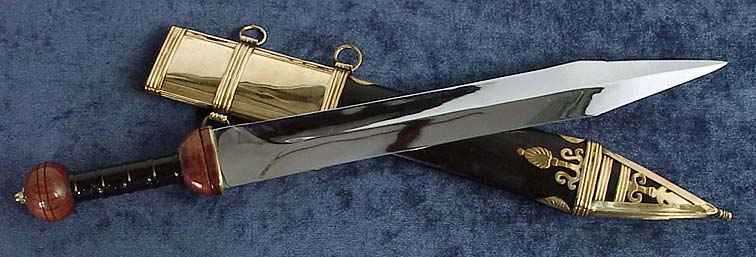“Legionaries! Form Testudo! Don’t question me soldier, or
you’ll be on latrine duties for a month. Why are we here you ask? For the glory
of the Emperor of course, do I have to remind you?”
In 43 AD the Roman Legions land on the coast of Britannia.
For the Romans Britannia is a dour, forbidding land, cold and rain sodden; its
warlike tribes had proved too much for even the legendary Julius Caesar a
century before. Only the promise of lands and booty convinces the near mutinous
legions to follow their commanders over the treacherous channel between Gaul
and Britannia. During late summer the ships of the Claudian invasion set sail.
We first see the invasion through the eyes of Centurion
Varro. Varro commands an elite unit of horsemen, who act as scouts for the 2nd
Augusta Legion under the overall command of Legate Vespasian. As soon as
possible Varro’s cavalry unit fan out to gauge the lay of the land. It becomes
clear that the warriors who had weeks before watched the coast had been
dispersed due to reports of the mutiny. The Legion lands unopposed but the
landing has been observed by one who will become an implacable enemy: Caratacus
of the Catuvellauni tribe.
The Catuvellauni had their seat of power in an area of
modern Herefordshire, Buckinghamshire, Cambridgeshire and Bedfordshire. They
were warlike and fierce and were one of the dominant tribes in Britannia. It
was the Catuvellauni who had formed the nucleus of resistance against Caesar.
The tribe was ruled by Caratacus and his brother Togodumnus. A third brother,
Adminius, had been previously exiled. It was Adminius who had appealed to
Emperor Claudius for help in his restoration as king, helping supplying Rome
with intelligence and a “justification” for the invasion.
Avoiding warbands Varro and his squadron rescue a child
sacrifice, destined to be burnt alive in a wickerman. They return the boy to
his grateful tribe where Varro meets the tribal healer called Brenna and begins
a relationship with her. Brenna can see the benefits of Roman civilisation and
wants to find a way of avoiding the bloodletting that is sure to come from
resisting the invading legions. Her wishes come to nothing, however, with the
brutal ambush of a supply train between the landing site and the Legion’s
forward fort.
Returning to the Legion, Varro and his comrades bring news
of a large force gathering, commanding a crossing of the Medway. Eager for a
decisive victory, Vespasian launches an attack. The Britons aren’t lacking in
courage, but they are lacking in armour, tactics and discipline. Despite their
strong position they are hurled into retreat.
Trailing the defeated column Varro and his comrades are
captured. Thirsting for revenge, a bloody retribution is enacted upon some of
the captives. Only the timely intervention of Brenna saves Varro from mutilation
and death. Brenna and her brother join Varro as members of their scouting unit.
As the story unfolds we begin to see the invasion through
the eyes of Caratacus. Caratacus is driven by his hatred of Rome but despairs
of the losses he sees his people suffering in set piece battles. The Catuvellauni
make good their losses with reinforcements from the neighbouring Dubonni.
Learning from their last encounter Caratacus and Togomundus make a stand
guarding the fords of the Thames. Despite initial success the superior tactics
of the Romans begins to tell. Togomundus makes a desperate chariot charge but
his attack is repelled and he is mortally wounded. With their last natural defence
lost, the lands and capitol of the Catuvellauni now lie open to the Romans.
Mourning the death of his brother Caratacus, his family and
followers flee westward to the lands of his cousin, the king of the warlike
Silures, occupying the mountains of present day south Wales. Caratacus realises
that courage alone will not prevail and he must force the Romans to fight him
on his terms; the Romans will pay dearly when they next meet him on the field
of battle.
The author, John Salter, certainly knows his subject, and is
himself a keen Roman soldier re-enactor. The structure of the Legions, their equipment,
and sheer logistics involved in the amphibious landing are conveyed to the reader
without coming across as a historical lecture. This is a self-published book
and it has to be said that there are some minor editing issues. A professional
edit would sharpen the edge of this Gladius to cut more cleanly but saying that,
the issues didn’t impinge on my enjoyment of this novel.
Both sides represented in this novel are brutal and cruel
reflecting the harsh realities of war. Without giving too much away, bloody
events at the end of this book cause perceived loyalties to be questioned. I’m
hopeful that the author intends on a series of books chronicling the conquest
of Britannia and I look forward to the next instalment.
Now, where was I? Oh yes. “Testudo will advance!”Caratacus: Blood of Rome is available from Amazon.
This review was written by Rob Bayliss. Rob is currently working on his Flint and Steel, Fire and Shadow fantasy series. Part one, The Sun Shard is available at Amazon.




A great review of a book already on my TBR list.
ReplyDeleteGreat Review Rob! I had the luxury of previewing this book. Looking for ward to reading all of it!
ReplyDelete